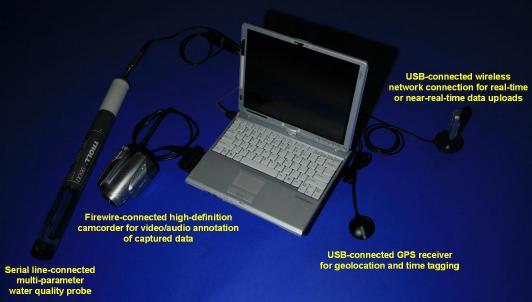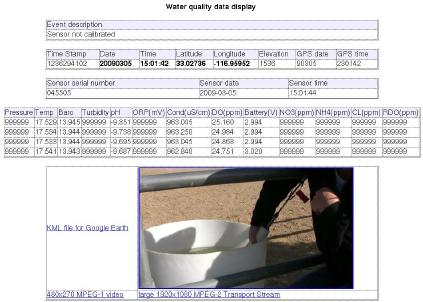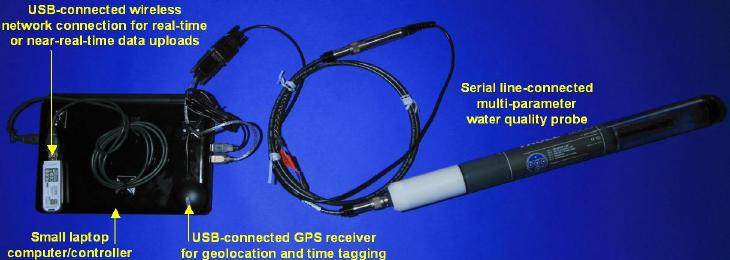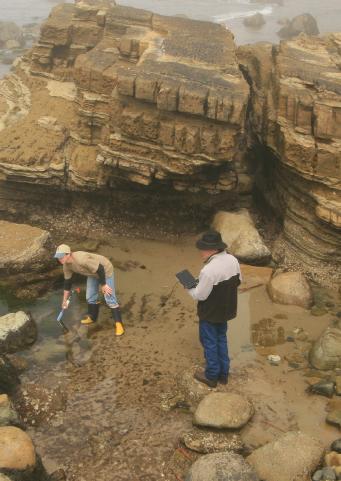
|
|
|
|
March 24, 2009
Initial experiments with a mobile multiple-sensor platform, using hydrology measurements Water is a valuable resource, which, including in Southern California, is not always abundantly available. Fixed water quality sensors, such as those at the SDSU Santa Margarita Ecological Reserve (SMER), are commonly used to determine an array of water properties; however, real-time water sensors that assess and communicate water properties and availabilities are quickly becoming a critical need for southern California. HPWREN principal investigator Hans-Werner Braun recently developed such a mobile water sensor system - one that assesses and communicates water properties in real-time. Using the wireless network infrastructure at SMER as a testbed, the user-friendly mobile sensor system allows for the collection of real-time and near-real-time water data and then displays this information on the Internet. With an objective towards a more comprehensive view of environmental conditions, this article describes a prototype of such a mobile multiple-sensor platform, that is able to utilize existing cyberinfrastructure, including for real-time data. While initially focused on hydrology sensors, it can be made applicable to other kinds of sensors a well. The system utilizes a small laptop as a commonly available controller to support sensors, initially using FreeBSD for its open-source operating system, and minimally adds a GPS receiver to geo-reference the measurement location. The water quality sensor for this effort was borrowed from Susan Teel, director of the National Park Service's California Mediterranean Research Learning Center. The above platform realistically requires two people to operate, specifically to manage the laptop, the camera, and the sensor, which turned out to be somewhat unwieldy. A second attempt was made with a smaller/lighter laptop to just provide the measurement data, alongside the GPS information, and a text annotation. That laptop does have a build-in camera and microphones, with functionalities which may eventually be added to this system. The software for this system utilizes multicast on HPWREN, if network connectivity is readily available, to distribute the data to possibly many recipients in real-time. A multicast-to-unicast server can be used to make the data available to recipients outside of HPWREN in real-time. In addition, the system stores the data locally, for annotated batch upload of possibly many measurements, once network connectivity becomes available. The uploaded files are then automatically processed on a server, and turned into web-accessible files.
|




